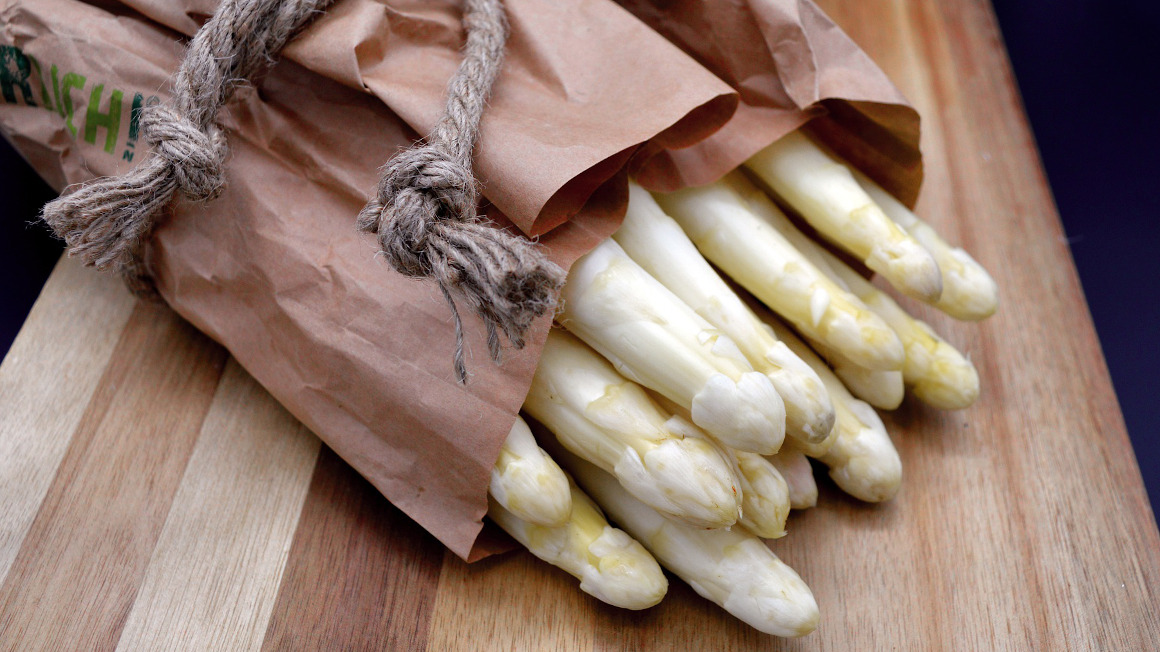Using asparagus peels for bioplastics
With a view to a circular bioeconomy, researchers at IfBB are investigating whether asparagus peels are suitable as fillers for biocomposites.

Market analyses show: Fossil plastics are slowly becoming less common. Even if products made from bioplastics are still a niche, experts expect significant growth in the coming years. But bioplastics are only sustainable if they are made from renewable raw and residual materials. Agriculture, the feed and food industry, luxury food production or waste recycling produce huge amounts of biogenic waste every day, the potential of which is gradually being tapped for the sustainable and circular bioeconomy.
Colorants and fillers from asparagus peels
Green waste, coffee grounds or straw have long been on researchers' agendas for bioplastics development. Researchers at the Institute for Bioplastics and Biocomposites (IfBB) are now taking a closer look at a new candidate: asparagus residues. In the research project "SpaPlast - Investigation of the Processing and Utilization of Asparagus Secondary Products for Biobased Extrusion Semi-finished Products", the team wants to investigate the extent to which this residual material is suitable as a filler for biocomposites.
Creating technical conditions for the use of residual materials
The main aim of the project is to create the technical conditions for the use of biogenic residual materials such as asparagus peels. To this end, the asparagus peels will first be technically prepared and then processed and characterized by means of extrusion and injection molding technology. In addition, the residual materials are also examined with regard to their marketability and sustainability. Up to now, asparagus peels have often been reintroduced into the soil as fertilizer. The project will therefore also clarify the extent to which the reduction of nitrogen input thus influences agricultural soils and groundwater.
Lasting increase in the acceptance of biomaterials
A main concern of the researchers is to promote the use of biogenic residues for biomaterials in order to increase sales markets, save costs, avoid waste and sustainably increase the social acceptance of biomaterials. The project is funded by the state of Lower Saxony through the Ministry of Food, Agriculture and Consumer Protection as part of the state strategy Biologization "New Ways for a Sustainable Lower Saxony".
bb


